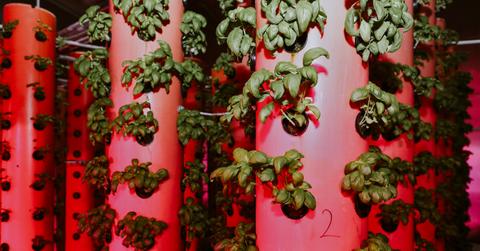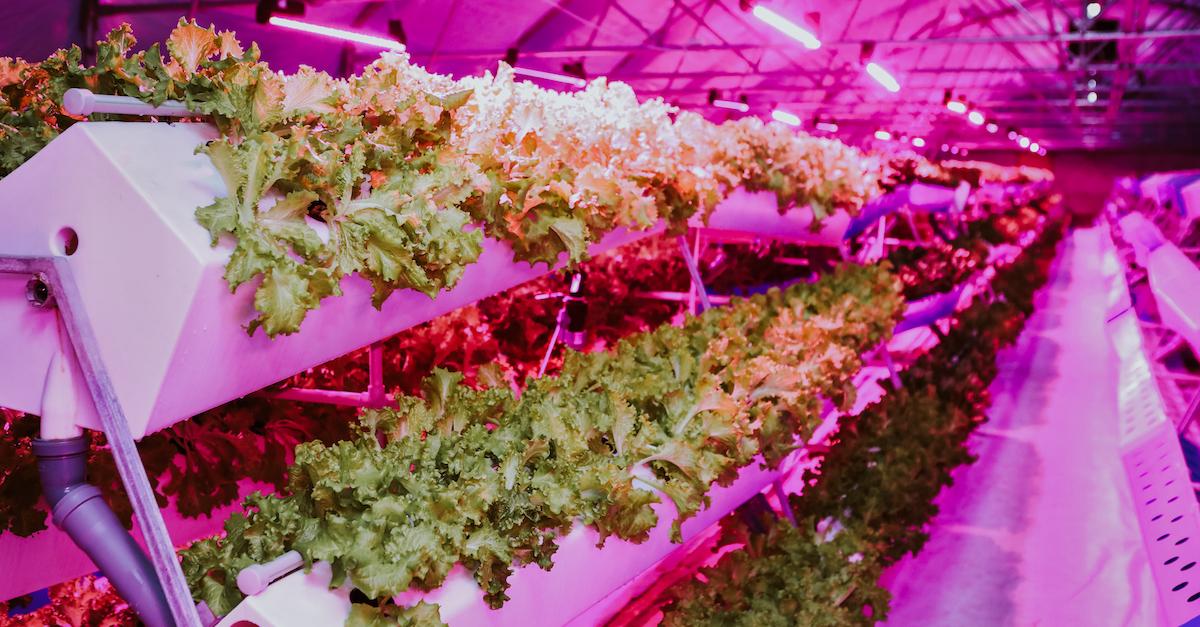Why Aeroponic Farming Is the Agricultural Wave of the Future
Updated Jan. 4 2023, 12:54 p.m. ET

Derived from the Greek word for air, aeroponic farming is similar in many ways to other soilless growing techniques like hydroponics. Yet, while this method still relies on a nutrient-rich delivery system, aeroponics is unique for its ability to grow faster, more plentifully, and using less water than many other growing methods. But what makes aeroponics so special, in the first place? And how does it actually work?

What is aeroponic farming?
In short, aeroponic farming is the growing of fruits and vegetables without necessitating the need for soil. According to Living Greens Farm, aeroponic farming was first developed for academic purposes in the 1920s. Without soil, students were able to properly examine root growth in real-time. Meanwhile, NASA saw the potential in this new growing method, and by the late '90s, NASA had begun using it as a way for growing food in space — a locale that is notoriously bereft of soil.
Not many advances have been made since those days, mind you, but as we continue to degrade the huge swaths of previously fertile soil and attempt to feed the world’s 8 billion people, aeroponic farming is beginning to get a bit more attention.
How does aeroponic farming work?
Aeroponic farming works by delivering nutrients to plants not via soil, but via a nutrient-rich mist, distributed to the roots via a pre-programmed mister. Instead of using a growing medium, as you would within a hydroponic setup, roots grown in aeroponic systems are left floating in midair. According to Modern Farmer, however, the seeds for plants grown in aeroponic systems still need to germinate and sprout in a growing medium before being transferred.
Why is aeroponic farming good for the environment?
The reason for aeroponics’ increased popularity has to do with the many ecological advantages it has over other devices or growing systems. According to Living Greens Farm, aeroponic systems take up a remarkable 98 percent less land than the rainforest-destroying farming techniques our species is currently employing. These systems also use about 98 percent less water than other standard farming and are more energy-efficient.
Because they are grown indoors, in light, temperature, and water-regulated conditions, plants grown through hydroponics are safer for human consumption. They are also free from the potential soil and pesticide compounds found in traditional produce. They might even have a higher yield than outdoor crops and grow at a rate three times faster.
Can aeroponic farming be done at home?
With the right equipment, you can absolutely build a working aeroponic system at home. Many of these systems are already commercially available and can be purchased as complete setups, but you can make your own with the right know-how and materials found at your local garden or hardware store.
Small Scale Gardener has instructions for building two different types of aeroponic systems in one’s home. The two systems are described as the single bucket system and the multi bucket system. The former is typically used for new gardeners or those who are looking to explore aeroponics as a hobby, the latter is a more advanced setup for small-scale farmers.
Aeroponic farming at home is versatile enough that you can grow herbs such as basil, ginger, rosemary, sage, oregano, mustard, or mint, as well as fruits and veggies like eggplant, lettuce, watermelon, broccoli, beets, onions, cucumber, cauliflower, cabbage, grapes, peas, peppers, potatoes, and radishes.
This article, originally published Sept. 10, 2021, has been updated.